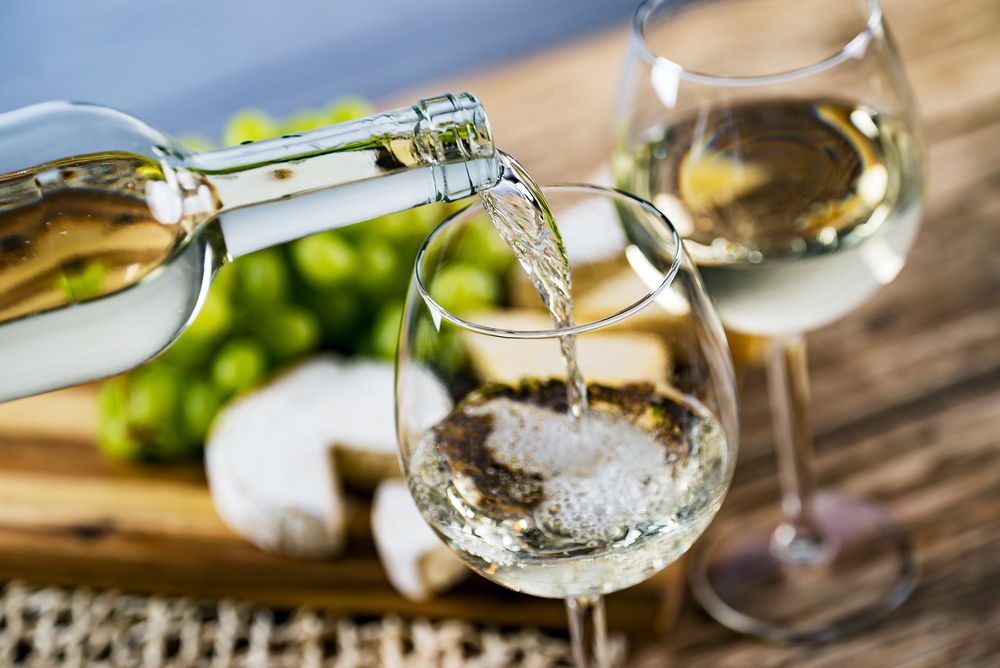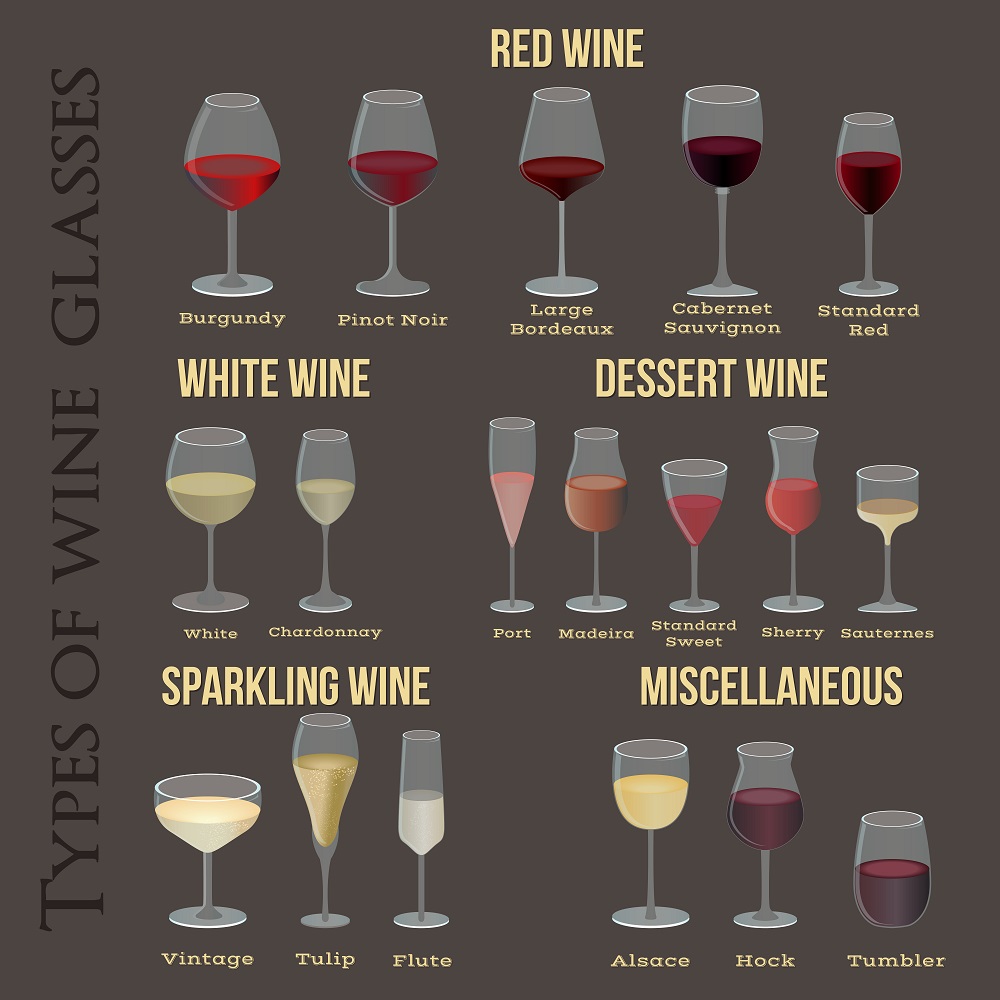The world of wine can be very confusing. There is so much wine-related terminology that it can be incredibly overwhelming to start delving in at the beginning. This article will take you through the basic information that you should know.
There are more than 40 different varietals of white wine. These are primarily made from a single variety of grape. Examples of this include Chardonnay, Chablis, Viognier, and Trebbiano. Within each of these, you will find wines with a range of sweetness.

Types Of Wines
There are 5 main types of white wine, categorized according to their flavor profile. These include light & sweet, light & zesty, herbaceous, bold & dry, or bold & sweet.
You can also buy wines that are light, medium, or full-bodied. Light-bodied wines will have a high acidity level and not many tannins. Medium-bodied wines will have medium quantities of both tannins and acidity.
Full-bodied wines will have a low acidity level and high levels of tannins.
Light And Sweet
Examples of light and sweet wines include Chenin Blanc, Gewürztraminer, Müller-Thurgau, Moschofilero, Muscat Blanc, Riesling, and Torrontés.
These wines are typically mildly sweet, retaining only a little sugar from the grapes. They are often very aromatic wines.
Gewürztraminer and Riesling: these two are particularly aromatic.
Light And Zesty
Examples of light and zesty wines include Albariño, Aligoté, Assyrtiko, Chablis, Chasselas, Chenin Blanc, Cortese, Friulano, Gargenega, Grenache Blanc, Muscadet, Piquepoul de Pinet, Pinot Blanc, Pinot Grigio, Ugni Blanc, Verdejo, Verdicchio, and Xarel-lo.
These wines are typically dry and light-bodied. Their flavor is described as clean and fresh.
Herbaceous
Examples of herbaceous wines include Erbaluce, Grüner Veltliner, Sancerre, Sauvignon Blanc, Verdejo, Vermentino, and Vinho Verde.
These wines tend to be light-bodied and have herbal aromas. They may have notes of bell peppers, jalapenos, and grass. They are ideally paired with herby or salad dishes.
Bold And Dry
Examples of bold and dry wines include Chardonnay, Marsanne, Sémillon, Trebbiano, Viognier, and White Rioja.
These wines are often aged in oak barrels, giving them a creamy undertone and notes of vanilla. The flavor of these wines is very intense.
Bold And Sweet
Examples of bold and sweet wines include Ice Wine, Late Harvest Wine, Madeira, Malvasia, Sauternes, Sherry, Tokaji, Vin Santo, and White Port.
These wines are typically very sweet and are frequently called dessert wines. They are best served with sweet dishes and chocolates.
How Is A White Wine Made?
There are a number of different ways to produce white wine. These variances are due to climate differences, the vintage, the winemaker, the winery, and where the wine is produced.
The main difference between red and white wine production is that after harvesting, the skins are removed from the grapes. This is done by crushing the grapes to separate the skin and the pulp.
This prevents color from being transferred to the wine from the grape skins.
The grape juice can then be left to settle. This allows the unwanted sediment to be removed more easily before the juice is fermented. This is the process whereby sugars are converted into alcohol.
Sweeter wines are fermented for less time, meaning there is a greater quantity of sugar left in the wine. For this reason, sweeter wines have a lower alcohol percentage.
Some wines are then further aged in oak barrels. This adds some nuance to the flavor profile but does make the production process longer. For this reason, many winemakers opt to send the wine straight for bottling.
How To Serve White Wine
Light, dry wines
These are wines such as Chenin Blanc, Sauvignon Blanc, Pinot Grigio, and Riesling. These wines should be served at a temperature between 45 and 49 degrees Fahrenheit. An easy way to judge how cool your wine should be served is to look at the color.
The lighter the wine, the cooler it should be served. This will help to preserve the freshness and acidity levels. These bottles will need about an hour and a half in the refrigerator.
Full-bodied whites
These are wines such as Albariño, Trebbiano, Chardonnay, Viognier, and Châteauneuf-du-Pape Blanc. These wines should be served between 50 and 55 degrees Fahrenheit to enhance the rich flavors and aromas.
The less oaky the flavor of your wine, the cooler it should be served. Wines such as a White Burgundy and a well-oaked Viognier should be served closer to 55 degrees Fahrenheit.
These bottles will need about an hour in the refrigerator.
What Glass To Use For White Wine
White wine should be served in a medium-sized glass with a bowl in the shape of the letter U. This is believed to be the best as it will keep the wine cool while also highlighting the aromas.
The rim of this glass will help force the wine to the front of your palate. This helps to create the perfect balance of fruit tones and acidity. These glasses have a small opening at the top which further assists with keeping the wine cool.
If your white wine is creamy in texture you should increase the bowl size of your glass. This will highlight the texture of the wine. This is a good idea for full-bodied whites too. The round bowl and wide rim help to spread the bold flavors and the acidity to the back and sides of your tongue.
Below is a pictorial representation of the different kinds of wine glasses and their most appropriate usage.

What Are Some Good White Wines For Beginners?
Chardonnay
This is made with a grape variety that is one of the 6 noble grapes. The flavor and aroma profile of Chardonnay can vary according to the winemaker and where it is made. Chardonnay grapes are found across the world and are an incredibly popular grape choice for winemaking.
Some great regions of Chardonnay grapes include Sonoma, California; Chablis, France; Burgundy, France; and the Margaret River, Australia.
Sonoma and Napa Chardonnay grapes undergo a process called malolactic fermentation and tend to have flavor notes of oak, popcorn, or butter. Chablis Chardonnay grapes have flavor profiles of wet stones, oyster shells, and citrus.
Chardonnay goes well with poultry and fish dishes.
Riesling
These wines can range in sweetness from 0 to 15% residual sugars. This makes them ideal for pairing with spicy foods and stir-fries. They can go through an extremely lengthy aging process which commonly results in some petroleum-like aromas.
Some great regions of Riesling grapes include Trocken, Germany (dry); Padikat or Spätlese, Germany (sweet); Alsace, France; Fingerlakes, New York; and Clare Valley, Australia.
Dry Rieslings pair well with poultry, pork, and fish dishes. Tuna, salmon, and eel pair exceptionally with these wines.
Sauvignon Blanc
This is a much lighter, crisper, and drier varietal than Chardonnay or Riesling. These grapes were first grown in Bordeaux but are now found across the world. These wines do not undergo malolactic fermentation.
They are designed to be consumed during the daytime in an outdoor setting.
These wines typically have a high acidity and a thin body. Some variants are aged in oak which results in a larger mouth feel. Some great regions of Sauvignon Blanc grapes include Sancerre, France; Marlborough, New Zealand; and Napa Valley, California.
Sauvignon Blanc pairs perfectly with fresh seafood, crunchy and fresh salads, and poultry.
Fun Wine Facts
- The largest bottle of white wine available for purchase is called a Nebuchadnezzar and contains a volume of around 15 liters of wine.
- It takes approximately 75 individual grapes to make a single glass of wine, and around 300 for a bottle.
- There are approximately 82 calories in a 100 ml glass of white wine.
- There are more than 1,300 different grape varieties used to make wine. These mostly originate from a single grape species known as Vitis vinifera.
- Shrimp Cocktail (and More) Wine Pairing Guide - 09/06/2022
- What Wine Serving Sizes Look Like: Standard Size and More - 08/06/2022
- How Much Sugar is in Wine: Glass and Bottle Sugar Content - 08/06/2022






